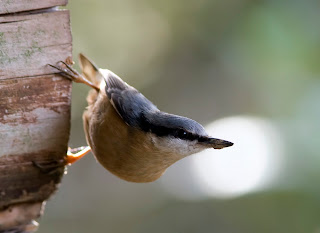It has been a long while since I’ve visited my favourite local nature reserve, Bretton Lakes. Since then (October 2010) the owners have decided that the place needs a facelift and work has begun on what they call an “Ambitious new landscape restoration project”. The scheme seems to have been born of a conspiracy between Yorkshire Sculpture Park, Wakefield Council and Natural England, who have provided a cool half-million quid to fund the work.
All well and good, but they appear to have ignored the interests of the current residents, the wildlife that has thrived in and around the lakes for many years in what used to be known as Bretton Lakes Nature Reserve.
The nature reserve only gets a mention once but it does state that,
“…YSP to restore and enhance 85 acres of woodland nature reserve around two 65 acre designed lakes…”.
Mmmm… “restore and enhance” – sounds great doesn’t it? I wonder how the 100+ species of birds as well as the Foxes, Bats, Woodmice, Voles, Badgers, Weasels, Squirrels, Rabbits, Hares etc., not to mention the vast array of insect life, will benefit from this ambitious restoration project?
Well the answer is that in a few weeks time all the aforementioned wildlife will all be able to enjoy such blessings as - “… historic footpaths, bridges, views, follies and incredible historical features including a Greek-style summer house, a now land-locked Boat House, an Obelisk, Stepping Stones and a magical Shell Grotto.”
Whoopee! I can just hear the chorus of approval from the residents!
I sneaked into the reserve the other evening to take a look around but can’t say that I was impressed with what I saw.
Compare these two photos for instance. Most of the habitat on the left-hand side has been completely destroyed! But the human visitors can now get a view of the lake from the hall so I suppose that’s ok? So much for the stated intention to “restore and enhance” – it looks more like a scorched earth policy to me.
I also paid a visit to the hide. I was dreading this as I thought they might have removed it but thankfully it is still there. The same can’t be said for some of the well-established trees at the rear though.
I’m really struggling to understand why these old trees had to be vandalised in this way?
Next I had a walk around to the side of the lake where I took many Kingfisher shots last year.
Kingfishers
Young Kingfishers
All the perches you can see being used in the two blogs (above) have now been removed. So much for “restore and enhance”. So much for the Kingfisher being a Schedule 1 Protected Species!
If you look at the photo below, down the right-hand side by the lake edge you can see where a tree has been removed. A fallen tree has also gone from a little further along the bank. Both of these trees provided many excellent perches for the Kingfishers. The live tree also shaded the water, enabling the birds to see the fish better and at the same time provided cover and protection from predators.

If you look near the centre of the photo you will notice that there is now a large gap in the trees and the ‘
Greek Temple’ (a cheap-looking folly) can be seen right at the top. This is another example of the wanton destruction. Many trees have been sawn down and lots of undergrowth ripped-up (important habitat for Wrens, Dunnocks etc.) just to provide the future human visitors with a view of the lake.
I suppose it is early days yet and one shouldn’t be too critical. But what the hell… its quite obvious that the interests of the wildlife have been completely ignored in favour of the human visitors to the park. A cracking nature reserve is in the process of being ruined so that the YSP can attract more people to pay £4 per car for each visit to the park. The nature reserve is being absorbed into the sculpture park. This is bad news for the wildlife!
A few bird photos taken during my visit...

Canada Goose, Robin, Nuthatch and a couple of Mallards playing Kiss-Chase.


































